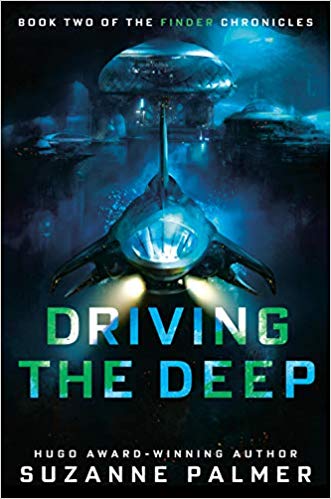 Driving the Deep (Finder Chronicles, #2) by Suzanne Palmer
Driving the Deep (Finder Chronicles, #2) by Suzanne Palmer Format: audiobook, eARC
Source: purchased from Audible, supplied by publisher via NetGalley
Formats available: hardcover, ebook, audiobook
Genres: science fiction, space opera
Series: Finder Chronicles #2
Pages: 432
Published by DAW Books on May 5, 2020
Purchasing Info: Author's Website, Publisher's Website, Amazon, Barnes & Noble, Kobo, Bookshop.org
Goodreads
From a Hugo Award-winning author comes the second book in this action-packed sci-fi caper, starring Fergus Ferguson, interstellar repo man and professional finder.
As a professional finder, Fergus Ferguson is hired to locate missing objects and steal them back. But it is rarely so simple, especially after his latest job in Cernee. He's been recovering from that experience in the company of friends, the Shipmakers of Pluto, experts at crafting top-of-the-line AI spaceships.
The Shipmakers have convinced Fergus to finally deal with unfinished business he's been avoiding for half his life: Earth. Fergus hasn't been back to his homeworld since he was fifteen, when he stole his cousin's motorcycle and ran away. It was his first theft, and nothing he's stolen since has been anywhere near so easy, or weighed so heavily on his conscience. Many years and many jobs later, Fergus reluctantly agrees that now is the time to return the motorcycle and face his family.
Unfortunately, someone has gotten to the motorcycle before him. And before he can figure out where it went and why the storage unit that held it is now filled with priceless, stolen art, the Shipyard is attacked. His friends are missing, presumably kidnapped.
Accompanied by an untrustworthy detective who suspects Fergus is the art thief and the sole friend who escaped the attack, Fergus must follow the tenuous clues to locate and save his friends. The trail leads them to Enceladus, where Fergus plans to go undercover to the research stations that lie beneath the moon's thick ice sheet deep in a dark, oppressive ocean.
But all movement and personnel are watched, and the limited ways through the thick ice of the moon's surface are dangerous and highly monitored. Even if Fergus can manage to find proof that his friends are there and alive, getting out again is going to be a lot more complicated than he bargained for.
My Review:
Fergus Ferguson has a gift, and not just the one that he thinks he has, his ability to put the pieces together to find things – and people – that are missing. Fergus’ more important gift is the gift of making friends wherever he goes – no matter how dangerous the situation or unlikely the friendship might be. Or how incredibly difficult the mess he makes may be to get out of.
Because Fergus Ferguson is every bit as good at making his life into a mess as he is at finding his way out of the mess he’s just made.
But this particular mess is going to be a bigger challenge than average – even for him. His friends from the Shipyards at Pluto are all missing, presumed dead. Or possibly missing, presumed kidnapped. Except for the one who isn’t dead, but is suspected of having caused the kidnapping and/or death of the others. Except she didn’t, but someone is trying awfully hard to make it look that way, in order to make everyone look the other way from whatever really happened.
Meanwhile, Fergus is stuck, deep under the ice on Enceladus, Saturn’s ice-covered moon. After all, it’s easy to hide things in a cold and dark place that damn few people want to go to in the first place. Especially dirty deeds being done, not exactly dirt cheap. Possibly on the public’s dime – or whatever passes for currency by Fergus’ time.
All Fergus has to do is figure out if his friends are down there, where they’re being held if they are, why they were kidnapped in the first place – and, of course, rescue them. Without getting them all killed.
And especially without drawing the notice of “the Bastards Above”.
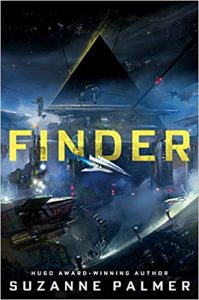 Escape Rating A-: I picked this up because I loved the first book in the Finder Chronicles. That book is named basically for Fergus, and it’s just called Finder. And it’s awesome.
Escape Rating A-: I picked this up because I loved the first book in the Finder Chronicles. That book is named basically for Fergus, and it’s just called Finder. And it’s awesome.
Both books, in fact, are an absolute treat to listen to, as the entire story so far is told from Fergus’ first person perspective, and the narrator does an excellent job of capturing Fergus’ wry, self-deprecating and universe-weary tone.
Howsomever, as often happens, I listened to the first half of this one and read the second, because I just couldn’t wait to find out how Fergus got himself out of the mess this time. Because it’s a doozy.
This feels like a story about closure, and perversely about opening. There’s that saying that when one door closes, another one opens. For Fergus, it feels a bit like he has to close that first door before he can let himself open the second one. Fergus ran away from home on Earth in his late teens, just after his dad committed suicide by drowning. An act that certainly comes back to haunt Fergus in the deeps under the ice of Enceladus.
But this story begins with Fergus going back to Earth for the first time in two decades, because there’s that door behind him that he needs to close. When he left he stole his cousin’s motorcycle. And it’s time for him to go back and take care of that debt, because looking back is keeping him from moving forward.
No plan of Fergus’ ever seems to survive contact with, well, Fergus, so his plan to get the motorcycle out of the storage locker he’s been paying for all these years turns up, not the motorcycle, but a whole bunch of stolen paintings that seem to be the ill-gotten gains from a museum robbery not unlike the real-life Isabella Stewart Gardner Museum theft in Boston in 1990.
Uncovering the paintings uncovers an undercover cop looking for the thieves. An obsessed man who is convinced that Fergus was one of the thieves he’s been hunting for years. Of course, his plans don’t survive Fergus either, and eventually, after a lot of misunderstandings and a few bouts of fisticuffs, they both end up trying to free Fergus’ friends.
But all of that turns out to be setup, as fascinating as it generally was. The story is really Fergus’ story, all alone in the dark of Enceladus, desperately hanging on to hope and trying to come up with a plan, in the face of the endless night and the unrelenting dark under the water.
In the end, with the help of new friends and old, including the stray cat Mister Feefs, Fergus manages to find the heart of this mystery. After all, while Fergus’ own plans never survive contact with Fergus – neither do anybody else’s.

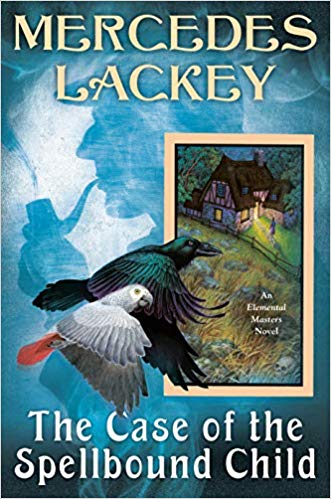 The Case of the Spellbound Child (Elemental Masters, #14) by
The Case of the Spellbound Child (Elemental Masters, #14) by 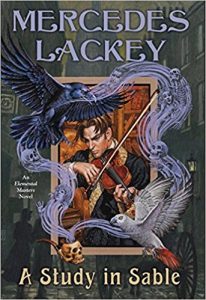 The series began with
The series began with 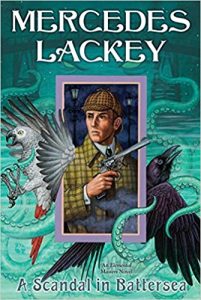 Escape Rating B+: If you look carefully at the background image in the book cover, you’ll recognize the silhouette of the famous detective, complete with pipe and just the suggestion of a deerstalker cap. It does lead one to believe that there will be more of Holmes than actually occurs in this case. On the other hand, there’s plenty of Watson, or rather, Watsons in this one, as the Wizard of London has tasked the Watsons with a case that he finds more important than the locals seem to.
Escape Rating B+: If you look carefully at the background image in the book cover, you’ll recognize the silhouette of the famous detective, complete with pipe and just the suggestion of a deerstalker cap. It does lead one to believe that there will be more of Holmes than actually occurs in this case. On the other hand, there’s plenty of Watson, or rather, Watsons in this one, as the Wizard of London has tasked the Watsons with a case that he finds more important than the locals seem to.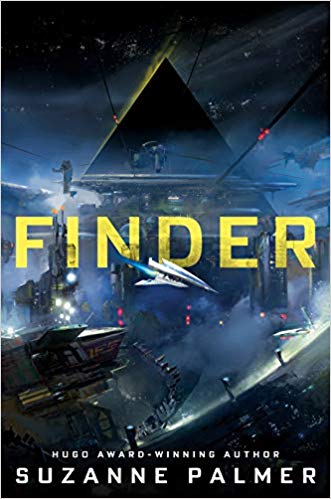 Finder by
Finder by 
 The Bartered Brides by
The Bartered Brides by 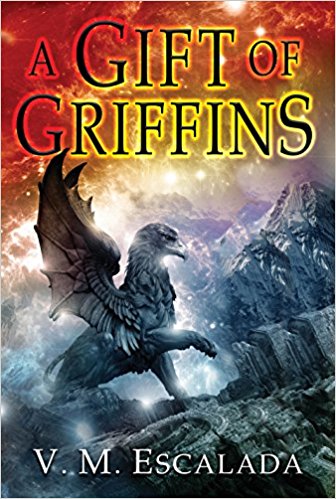 Gift of Griffins by
Gift of Griffins by 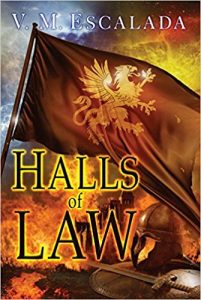 Gift of Griffins is the direct followup to last year’s terrific
Gift of Griffins is the direct followup to last year’s terrific  The Privilege of Peace (Peacekeepers, #3) by
The Privilege of Peace (Peacekeepers, #3) by  Torin Kerr begins the series as a Sergeant in the Confederation Marines, and even though at the end of the Confederation series she does manage to retire the sergeant from the Marine Corps, as we, she and her crew discover in
Torin Kerr begins the series as a Sergeant in the Confederation Marines, and even though at the end of the Confederation series she does manage to retire the sergeant from the Marine Corps, as we, she and her crew discover in 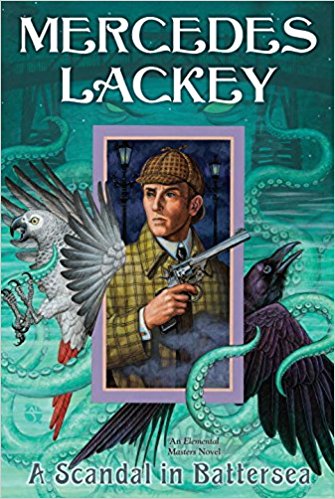 A Scandal in Battersea (Elemental Masters, #12) by
A Scandal in Battersea (Elemental Masters, #12) by 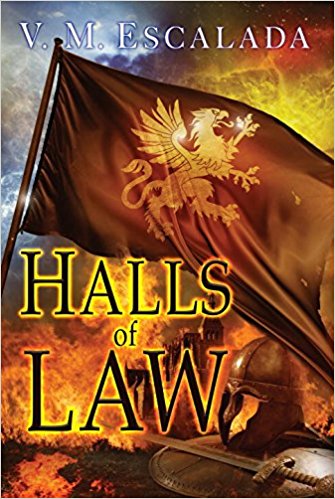 Halls of Law by
Halls of Law by  Reviewer’s Note: V.M. Escalada was billed as a debut author in the material I received for my Library Journal Science Fiction and Fantasy article,
Reviewer’s Note: V.M. Escalada was billed as a debut author in the material I received for my Library Journal Science Fiction and Fantasy article,  A Peace Divided (Peacekeeper, #2) by
A Peace Divided (Peacekeeper, #2) by  There’s an absolutely kick-ass military SF story in A Peace Divided. And that story is a marvelous continuance of pretty much everything that has happened to Gunnery Sergeant, now Warden, Torin Kerr from her first introduction in
There’s an absolutely kick-ass military SF story in A Peace Divided. And that story is a marvelous continuance of pretty much everything that has happened to Gunnery Sergeant, now Warden, Torin Kerr from her first introduction in 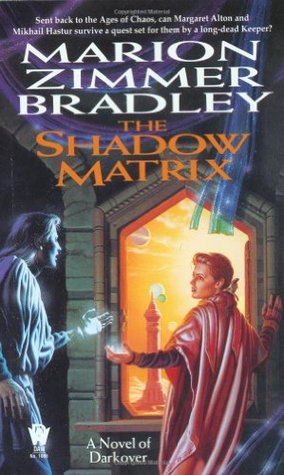 The Shadow Matrix by
The Shadow Matrix by 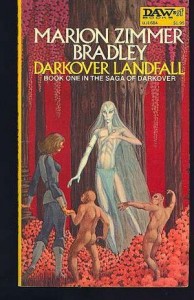 Escape Rating: B+. I’ll say it right up front: If you’ve not read a lot of other Darkover novels before this one, The Shadow Matrix will be almost incomprehensible to you. There’s backstory a-plenty: the politics of the Comyn, the madness of the Elhalyn family, laran and everything that goes with that, the Darkovans’ experiences with the Terrans, Lew Alton himself, the Shadow Matrix, and so, so much more. Names and terminology are thrown around willy-nilly, and you’re supposed to just know all that stuff.
Escape Rating: B+. I’ll say it right up front: If you’ve not read a lot of other Darkover novels before this one, The Shadow Matrix will be almost incomprehensible to you. There’s backstory a-plenty: the politics of the Comyn, the madness of the Elhalyn family, laran and everything that goes with that, the Darkovans’ experiences with the Terrans, Lew Alton himself, the Shadow Matrix, and so, so much more. Names and terminology are thrown around willy-nilly, and you’re supposed to just know all that stuff.